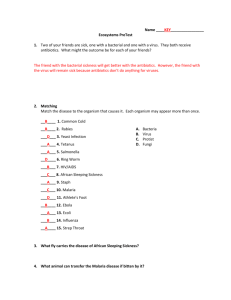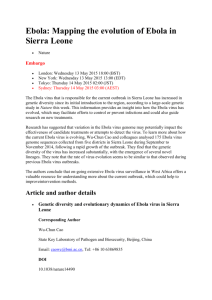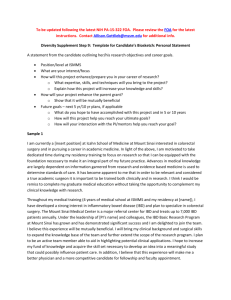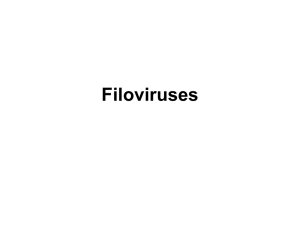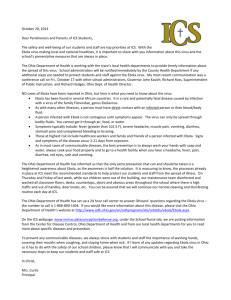b : Description of Ebola Virus
advertisement
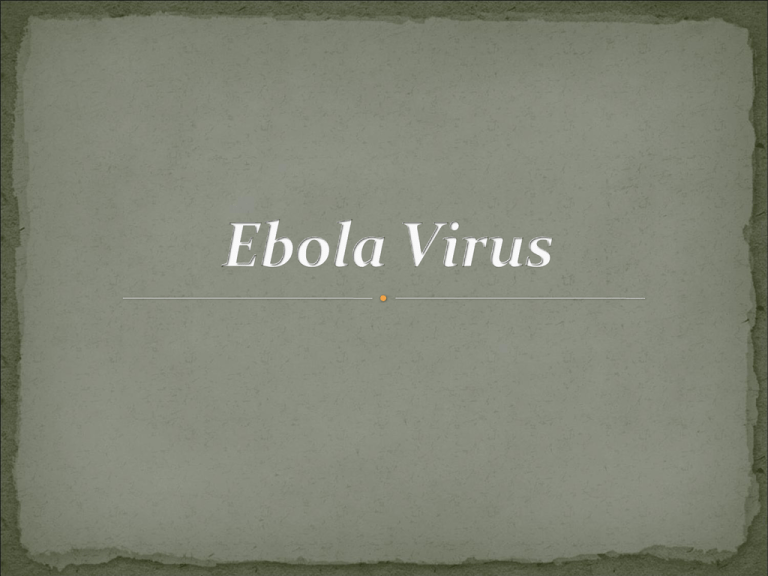
Introduction 1) Viruses 2) Interspecies Transmission processes 3) Biodiversity Damage Conclusion / Opening a : What is a virus? Considered like a non-living entity Needs a host to survive 2 types: DNA and RNA virus Life cycle b : Description of Ebola Virus Photography Infection processes Specificities 80 nm in diameter Filovirus family ~ 19000 nucleotids 288 amino acids codes for seven structural proteins and one nonstructural protein b : Description of Ebola Virus Photography Infection processes Specificities Blood Organ secretion Body fluids 4 types of Ebola virus : Zaire Sudan Ivory Coast Reston Incubation period : 2 to 21 days Pathologies : hemorrhagic fever, death by stroke Transmission between species Geographical distribution Mode of action and Symptoms ? http://openlearn.open.ac.uk Every tissues are affected, excepted bones and muscles. The virus creates blood clots. Clots goes towards internal organs (lungs, eyeballs…). It prevents oxygen to rise tissues. The virus also destroys connective tissues (affinity with collagen). Initial symptoms : High temperature (at least 38.8°C) Muscle, joint, abdominal pain Nausea Blood stream slow down Late symptoms: Diarrhea Vomitting blood Hemorrhage of sclerotic arterioles Internal and external haemorrhages from orifices (nose, mouth, skin, eyes) Lethality rate : between 50% and 90% Death after 6-10 days Outbreaks of Ebola Virus in Africa from 1976 to 2005 (OMS) Multiple Ebola virus transmission events and rapid decline of Central African wildlife, SCIENCE, 2004. Ebola virus is extremely virulent The infected organism does not have time to react to the virus First symptoms appear during the critical period. Methods needed to detect the virus as soon as possible: PCR ≠ ELISA techniques How bats can be protected against the Ebola Virus?

